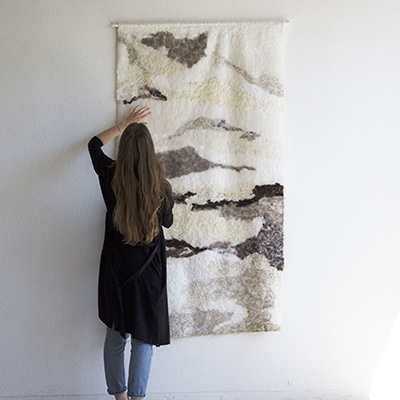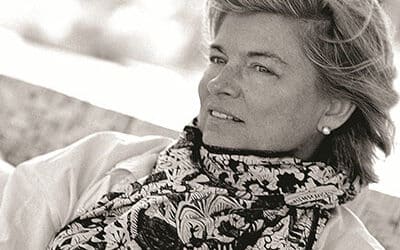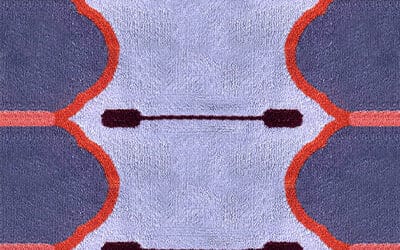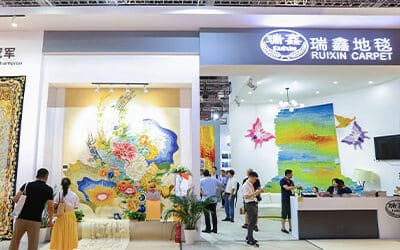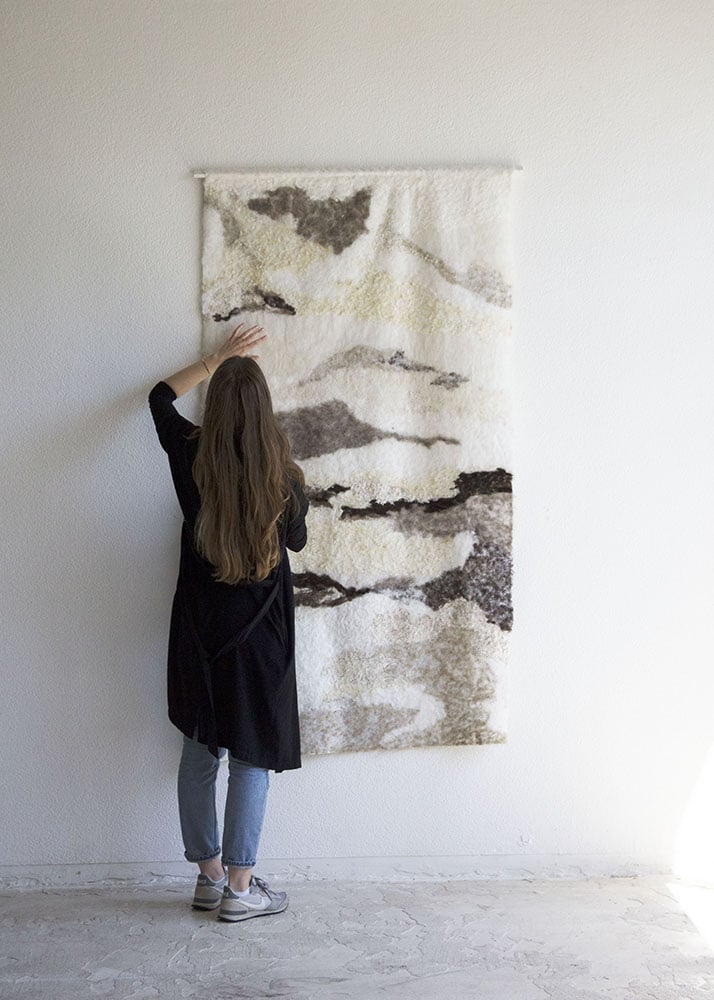
Marleen V Haaften is a young Dutch textile designer who works with a variety of raw materials to create very tactile rugs and textiles. In June, she will be showing work at London’s New Designers, as part of the Week 1, ‘One Year In’ display. Here she speaks to COVER magazine about her creative output.
How did you become a textile designer?
I studied to be a product designer, and while trying out different things there was something that drew me to textile particularly. It’s the somewhat less-technical nature of (my) textile design work, the freedom to explore and the possibility to work with such a wide range of materials. It’s very tactile and poetic. I was also very much inspired by my supervisors at studio Tas-Ka in The Hague and studio LileSadi in Rotterdam, where I took internships over the course of my studies. I feel it is really in practice where you learn what you like to work with and what really works for you too.
You grew up in the Netherlands, how would you say this influences your work as a designer today?
Dutch design, as I see it, is overall very progressive and advanced. It’s a very nice climate to live and work in and I really feel this is because of a certain openness to always learning about other cultures, people, materials and techniques. That’s something I also really try to incorporate in my own work, just being broad-minded and curious.
As an Arts & Crafts student, the focus was always on developing your own ideas and work, which is amazing and really helped me progress my work. For the future, though, I would also love to get more experience with for instance the Japanese model of working with one very specific creative technique and just owning it, really.
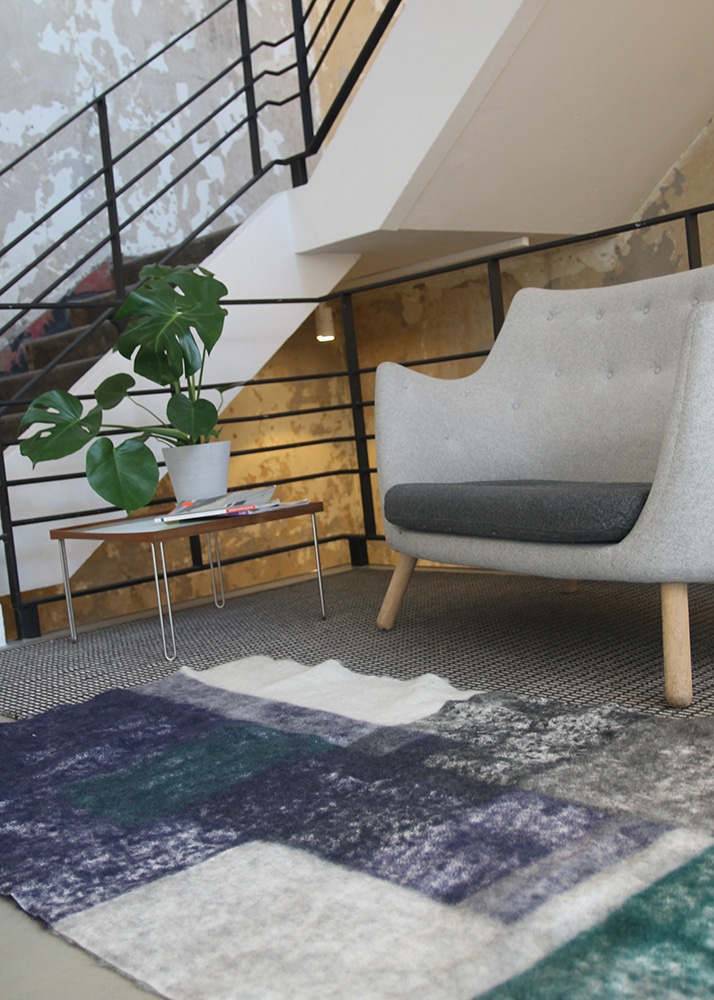
Do you have a favourite ever design / or product that you have created?
I am personally very proud of a rug I made some time ago, which I have named the Surface. It consists of several different layers of colour blocks that all melt together very nicely in my opinion. When I started this project, I had just been to this fascinating exhibition on Callum Innes’ abstract paintings in a Dutch modern art gallery called De Pont (Tilburg), and just got so inspired by the colours in his work. So serene, so pure… It’s the kind of feeling I try to pass on with my Surface rug as well, and I am very happy with how it worked out.
What inspires you?
Being outside, but really in the widest sense of the word: I often get new inspiration in nature as I am very interested in landscapes and colour patterns. But also when I meet new people, hear new ideas, and just get outside of my daily routines and surroundings. When I am stuck and feel I’ve hit a wall, it really helps me to simply take a break and just let go for a bit.
I also often get inspired through the actual making process. To give an example, when I started out with my current ‘Fiber Landscape’ project, in which I use a range of natural fibres to recreate actual landscapes, I made these (quite) massive rugs of about 2 by 1 metres. During the process, I started playing with the idea of taking a completely different approach; making smaller works that take the shape of mini landscape portraits. I am now experimenting with a range of sizes, from 50x7o cm to just about 21 x 30 cm, and although it’s a bit tricky at times as it’s so different from making the larger rugs, I really love working on these smaller, bespoke landscape portraits.
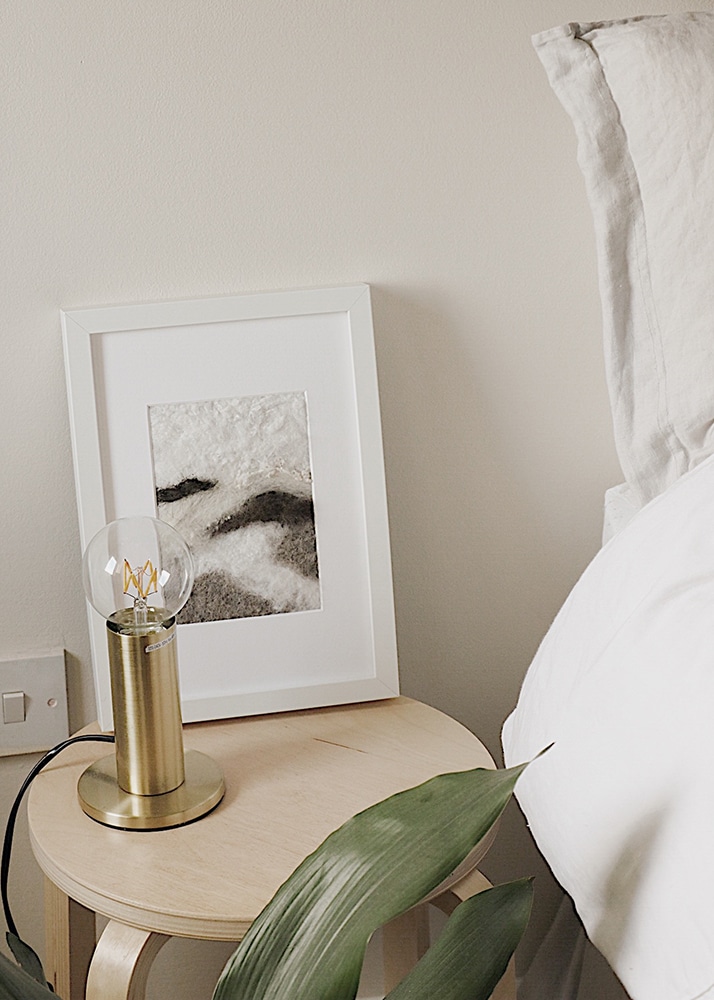
What does your creative process look like?
My process is usually quite research-intensive; if I have the idea of let’s say making a rug with natural fibres (as with my ‘Fiber Landscapes’ project), I will first study all sorts of different materials, see what is out there already in terms of design, what I can add, I’ll make mood boards, all those kind of things. When the actual making process starts, I mostly need space, time and my playlists (music is key!). For me, the process often consists of a fair amount of failures, essentially just trying out what works, re-working and just working it out until I am happy with the result (which always takes a while as I’m quite the perfectionist…).
What would you most like to make that you haven’t so far?
Money! Haha. But being fully honest, I have put all my focus and energy in developing my work and ideas, and now I really need to start focusing more on the business-side of things: pricing, marketing, accounting, that sort of stuff. A whole new ball-game, and definitely not my natural habitat!
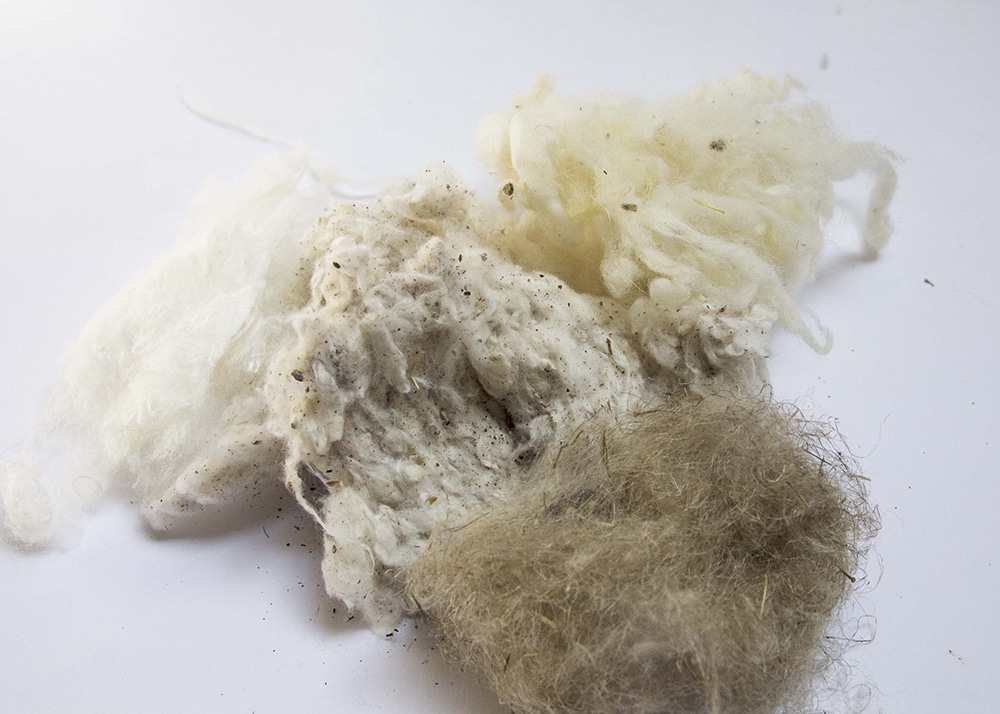
What type of material do you prefer to use?
I love working with unprocessed, natural fibres. I am currently working with amongst others pure cotton, lambswool, alpaca wool and bamboo. I like to use them in their purest form, allowing me to expose the raw beauty of these materials. I sometimes feel we have become so detached from nature and the beautiful materials found there; everything today seems to be made of polyester, blended, mixed and untraceable fabrics. Using these raw and unprocessed fibres is my way of trying to get back this connection with our natural surroundings.
What are you most proud of achieving since leaving university?
Straight after finishing university, me and my partner moved from the little village we grew up in in the Netherlands, to Dublin. It’s such a vibrant city; international and exciting. But we didn’t know anyone there and had to really start from scratch. So what I am most proud of is setting up my artistic practice here, further developing my work and now also joining the New Designers Exhibition in London end of June!
What do you think is the future of textile design?
This is a bit too philosophical perhaps but growing up in a post-modern age where everything always needs to be different, cutting-edge, new and radical, I hope (and feel) we’ll move more towards something that just puts the vocal point more at emotional connectedness, feeling & sensibility. In textile design, this translates into revamping the value of true craftsmanship, sharing knowledge and traditions in order to create high-quality and truly meaningful objects.
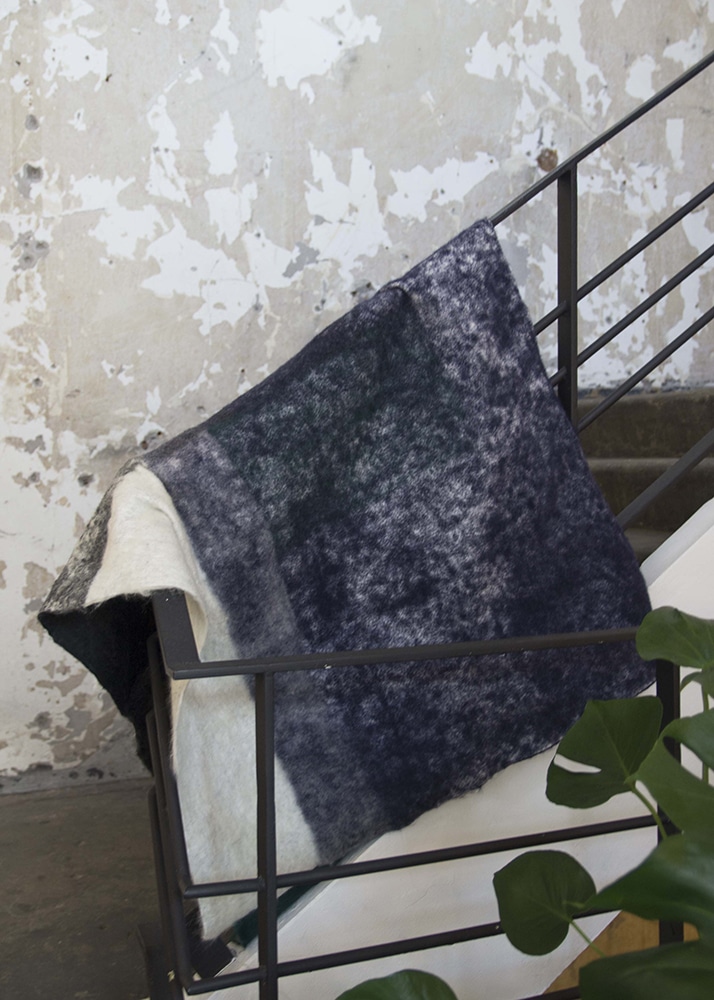
Can you tell us about something exciting you are working on at the moment?
Definitely! I am currently working on my collection of smaller fibre landscape portraits, which I am hoping to present at the New Designers exhibition along with two earlier works I made in this range that were, as said, much much bigger. In short, ‘Fiber Landscapes’ seeks to once again bring sensitivity and emotional connections to the centre of design. It does so using a wide range of natural fibres that are blended together and spread over the canvas through the method of needle punching. Together, the fibres portray a tangible landscape that urges people to rethink our relationship with nature and the many beautiful materials found there.
